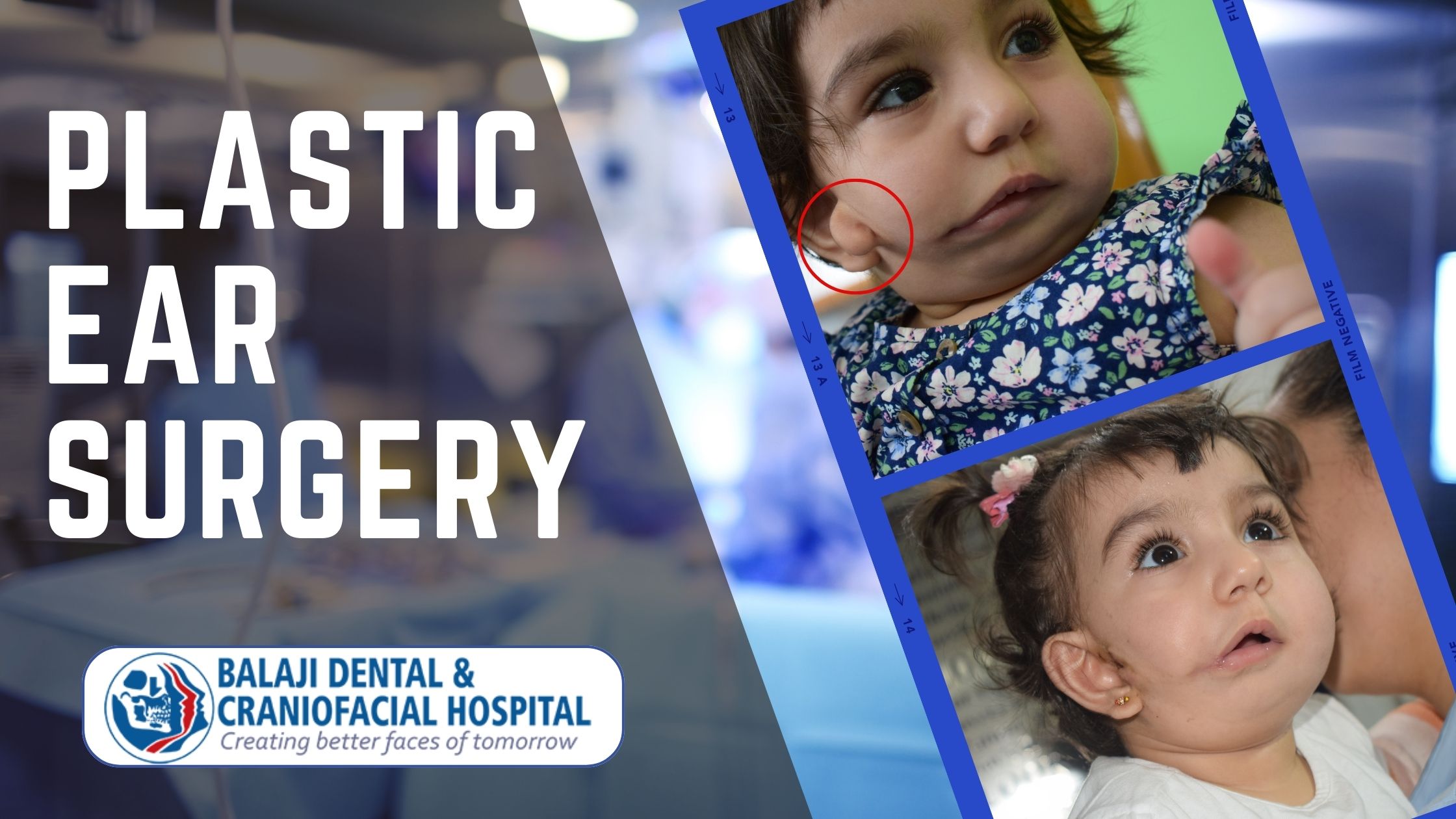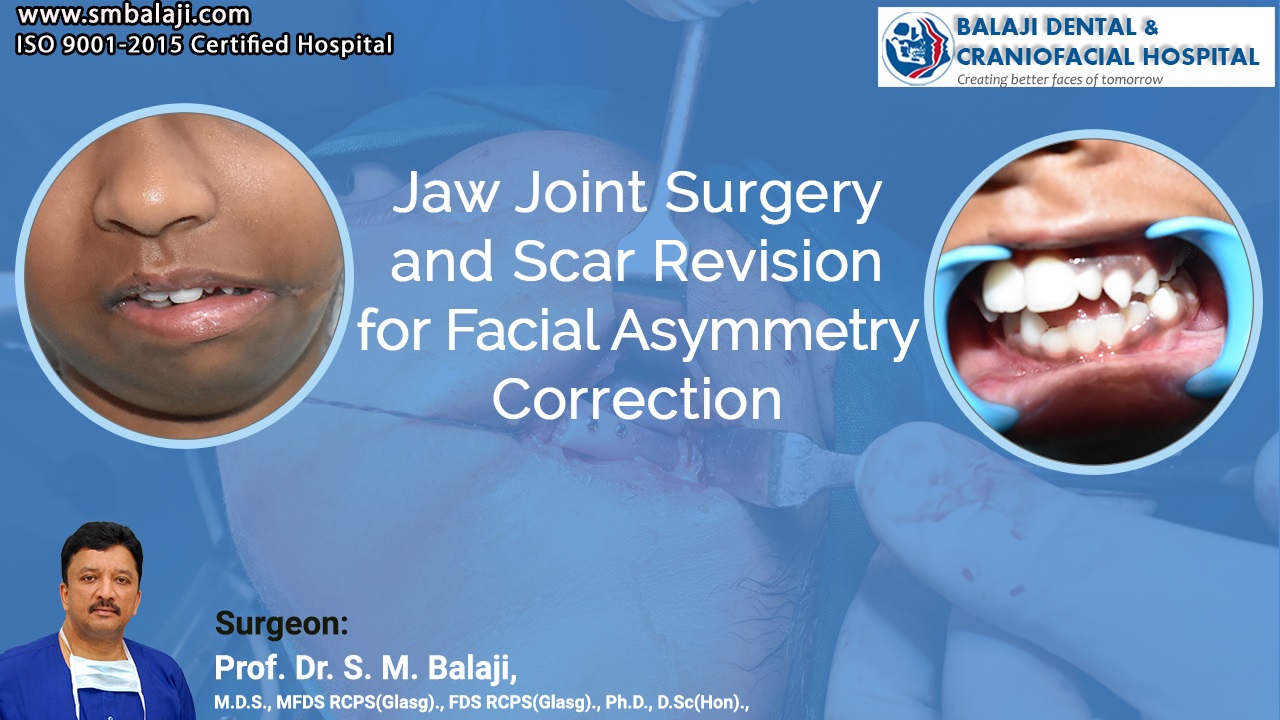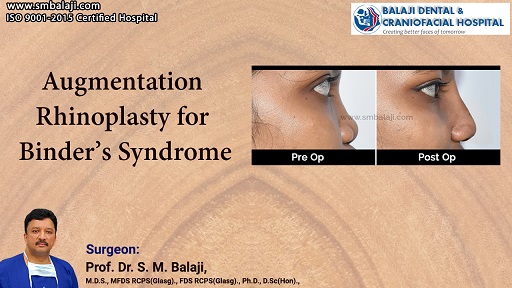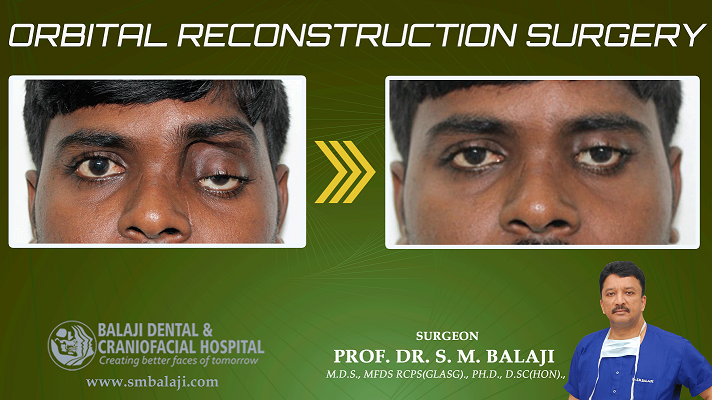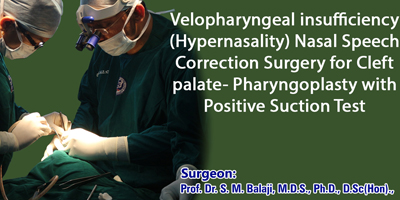
by smbalaji | May 1, 2018 | Surgery, Video
Initial Presentation
This young man from Yangon, Myanmar, had been born with a cleft lip and palate and had undergone cleft repair as an infant. He had subsequently developed velopharyngeal incompetence, where there is escape of air through the nose during speech. This had lead to him having difficulty pronouncing certain words well and he also had a nasal twang to his voice. He had very limited mouth opening. He presented to Balaji Dental and Craniofacial Hospital, Teynampet, Chennai for surgical correction of his speech difficulties. He had been referred to a speech pathologist who advised him for a sphincter pharyngoplasty surgery to correct his velopharyngeal incompetence/hypernasality.
Treatment Planning and Surgery
Dr SM Balaji, Cranio-Maxillofacial Surgeon, examined him and advised him that he needed a pharyngoplasty surgery for correction of his problem. The patient agreed to this and was scheduled for surgery. This surgery is performed for the creation of a dynamic sphincter in the pharynx by repositioning of the palatopharyngeus muscle. The patient was taken to the operating room and underwent general anesthesia without complications. Incisions were made to release the posterior faucial pillars, including the palatopharyngeus muscle. These were then crisscrossed and sutured together on the posterior pharyngeal wall.
This formed a sphincter along with the formation of a small opening or “port” for the patient to breathe through his nose. Though his mouth opening was very limited, his sphincter pharyngoplasty was very successful.
Successful Positive Suction Test Demonstrates Successful Surgery
Successful demonstration of a positive suction test at the completion of the surgery revealed a dynamic velopharyngeal sphincter action thus indicating successful correction of his velopharyngeal incompetence. The patient was then extubated and recovered from general anesthesia without complications.
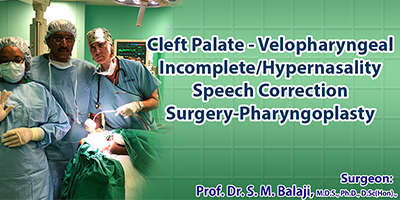
by smbalaji | Apr 11, 2018 | Events, Surgery
A patient with velopharyngeal insufficiency presents to Dr SM Balaji
The patient had been born with a cleft lip and palate. This had been set right as an infant. She later developed velopharyngeal incompetence. This is where there is escape of air through the nose during speech. It also manifested as difficulty pronouncing certain words well. This also added a nasal twang to her voice. She searched far and wide for the right cleft lip and palate surgeon to correct her problem. The patient was then referred to Dr SM Balaji. He is a world renowned cleft lip and palate surgeon.
Surgery planned for the patient
Dr SM Balaji, Cranio-Maxillofacial Surgeon, examined her. He explained to her that she needed a pharyngoplasty surgery to correct this. The patient was in agreement with this and was then scheduled for surgery. Aim of this surgery is to create a dynamic sphincter in the pharynx. Repositioning of the palatopharyngeus muscles achieves this.
The surgical procedure
The patient was then taken to the operating room. She then underwent general anesthesia without complications. Incisions were then made to release the posterior faucial pillars. This included the palatopharyngeus muscles. These muscles were then crisscrossed and sutured together on the posterior pharyngeal wall. A sphincter was thus formed here. This left a small opening or “port” for breathing through the nose.
Successful positive suction test
A positive suction test was then performed after completion of the surgery. This demonstrated a new dynamic velopharyngeal sphincter action. Correction of the patient’s velopharyngeal incompetence was thus completed.
The patient expressed total satisfaction with the results of the surgery. She was then discharged from the hospital.
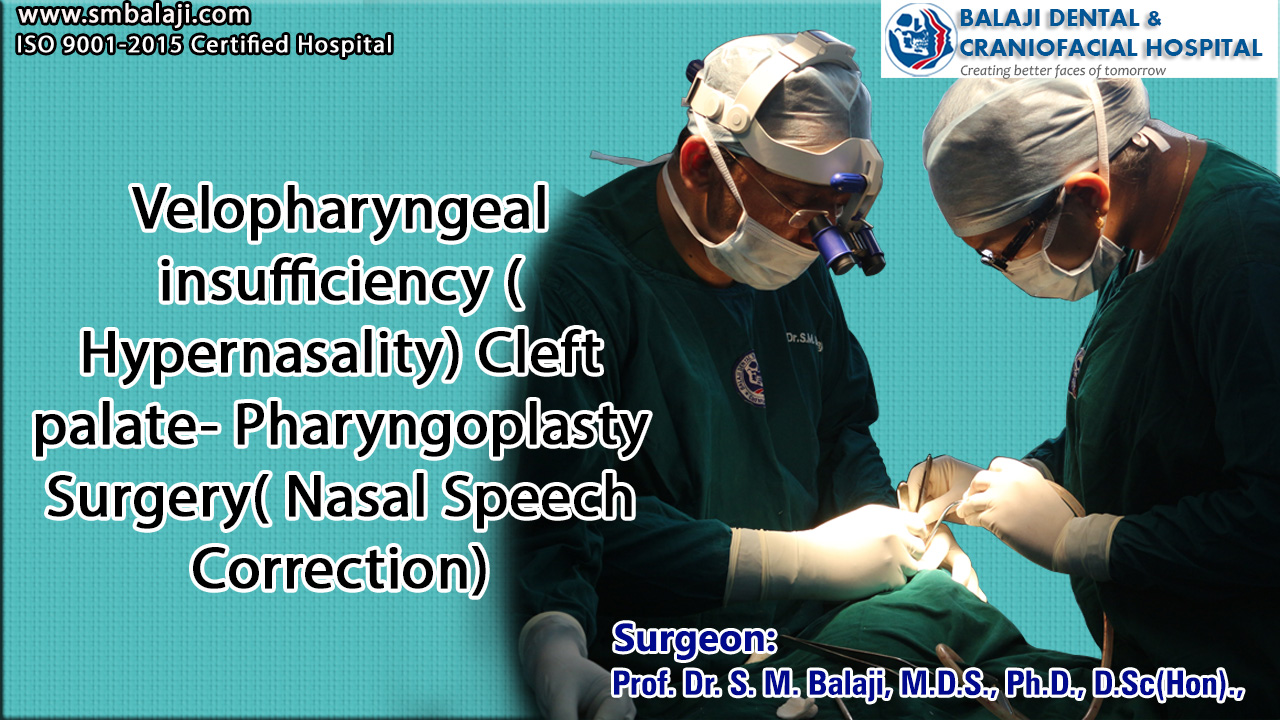
by smbalaji | Feb 23, 2018 | Surgery, Video
This young man had difficulty pronouncing certain words well and had a nasal twang to his voice. He had been born with a cleft lip and palate and had undergone repair as an infant. He had subsequently developed velopharyngeal incompetence, where there is escape of air through the nose during speech.
He presented at Balaji Dental and Craniofacial Hospital, Teynampet, Chennai for correction of his problem. Dr. S. M. Balaji, Cranio-Maxillofacial Surgeon, examined him and explained to him that he needed a pharyngoplasty surgery for correction of his problem. The patient was in agreement with this and was scheduled for surgery. The aim of this surgery is to create a dynamic sphincter in the pharynx by repositioning the palatopharyngeus muscles.
The patient was taken to the operating room and underwent general anesthesia without complications. Incisions were made to release the posterior faucial pillars, including the palatopharyngeus muscles, which were then crisscrossed and sutured together on the posterior pharyngeal wall to form a sphincter leaving a small opening or “port” for breathing through the nose. A positive suction test was performed after completion of the surgery and showed new dynamic velopharyngeal sphincter action indicating successful correction of velopharyngeal incompetence. The patient recovered from general anesthesia without complications.



